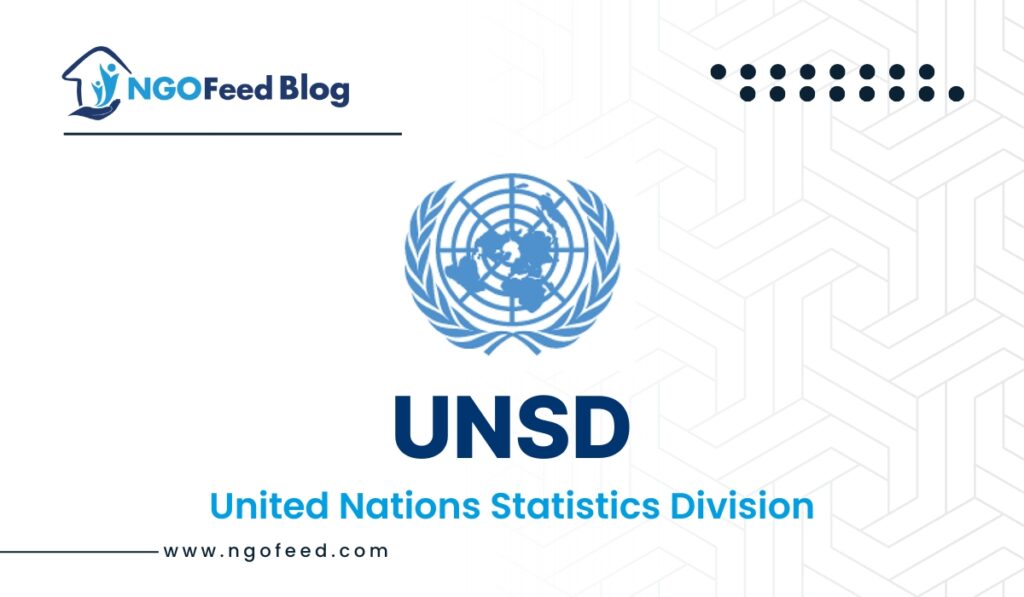UNSD Full Form: The United Nations Statistics Division (UNSD), under the United Nations Department of Economic and Social Affairs (DESA), serves as the central mechanism within the Secretariat of the United Nations to supply the statistical needs and coordinate activities of the global statistical system. The Division is overseen by the United Nations Statistical Commission, established in 1947, as the apex entity of the global statistical method and the highest decision-making body for coordinating international statistical activities. It brings together the Chief Statisticians from member states from around the world.
UNSD is cooperating with many international, regional, and supranational agencies to work on statistical standards, data collection, and capacity building, including energy statistics. Throughout this article, you will get information about the UNSD, such as its history, area of work, scope, publication, function etc.
Table of Contents
UNSD Overview
This section briefly overviews the UNSD (United Nations Statistics Division). Let’s have a look.
| UNSD | United Nations Statistics Division |
| Headquarters | New York, United States |
| Formation | 1947 |
| Parent organization | United Nations |
| Type | Programme |
| Status | Active |
| Head | Stefan Schweinfest |
| Website | https://unstats.un.org/home/ |
| Official languages | Arabic, Chinese, English, French, Russian and Spanish |
Read also:
What is UNSD?
The United Nations Statistics Division is dedicated to developing the global statistical system. We collect and distribute global statistical data, create standards and rules for statistical activities, and assist countries in strengthening their national statistical systems. We promote the coordination of international statistical activities and assist the United Nations Statistical Commission in its role as the apex of the global statistical system.
UNSD Work and projects
UNSD works in more than 140 countries on five continents concentrating on six areas:
- Coordination
- Development Indicators
- Economy
- Environment
- Geospatial Information
- Population and Society
UNSD Work Programme
| Statistical Classifications | Trade Statistics |
| Big data for official statistics | Tourism Statistics |
| Development indicators | National Accounts |
| Geospatial Information | Energy Statistics |
| Demographic and Social Statistics | Environment Statistics |
| Gender Statistics | Environmental-Economic Accounting |
| Industry Statistics |
Read also:
UNSD Function
The mandate and substantive focus of UNSD translate into seven core functions:
- Provides a global repository for data on international trade, national accounts, energy, industry, the environment, and demographic and social information from national and international sources.
- Promotes worldwide standards for national agencies’ procedures, classifications, and definitions.
- Provide assistance and training to Member States to help them enhance their statistical services.
- The Division coordinates worldwide statistical programmes, and activities delegated to it by the United Nations Statistical Commission and the Committee for the Coordination of Statistical Activities (CCSA).
- The United Nations Statistical Commission receives input and secretarial support from this organisation.
- Facilitates implementing and reviewing the 2030 Agenda for Sustainable Development by serving as the Secretariat of the Inter-agency and Expert Group on SDG Indicators and managing the worldwide SDG Indicators Database.
- Promotes modern surveying and mapping techniques as a tool for growth and development.
Conclusion
The United Nations Statistics Division (UNSD) is an important place for all world statistics work. Its job is to improve statistical capabilities around the world by encouraging the sharing, coordinating, and standardizing of data across many areas. The UNSD helps countries work together and make decisions based on facts by having broad work plans that cover things like the economy, environment, and people. Its support for putting the 2030 Agenda for Sustainable Development into action also shows how dedicated it is to pushing strategies for global development that are based on data. In the end, UNSD’s work is very important for improving scientific methods and making it easier for people around the world to make smart decisions.
Frequently Asked Questions (FAQs)
What is the full form of UNSD?
The full form of the United Nations Statistics Division.
Who is the head of UNSD?
Stefan Schweinfest.
When and where UNSD was established?
UNSD was established in 1947.
Does UNSD pay interns?
UNSD internship is unpaid.
Where is the headquarters of UNSD?
United Nations Statistics Division headquarters in New York, United States.
What does the UNSD do?
The UNSD is responsible for compiling and disseminating global statistical information, developing standards and norms for statistical activities, and supporting countries’ efforts to strengthen the statistical systems.
Read also:










